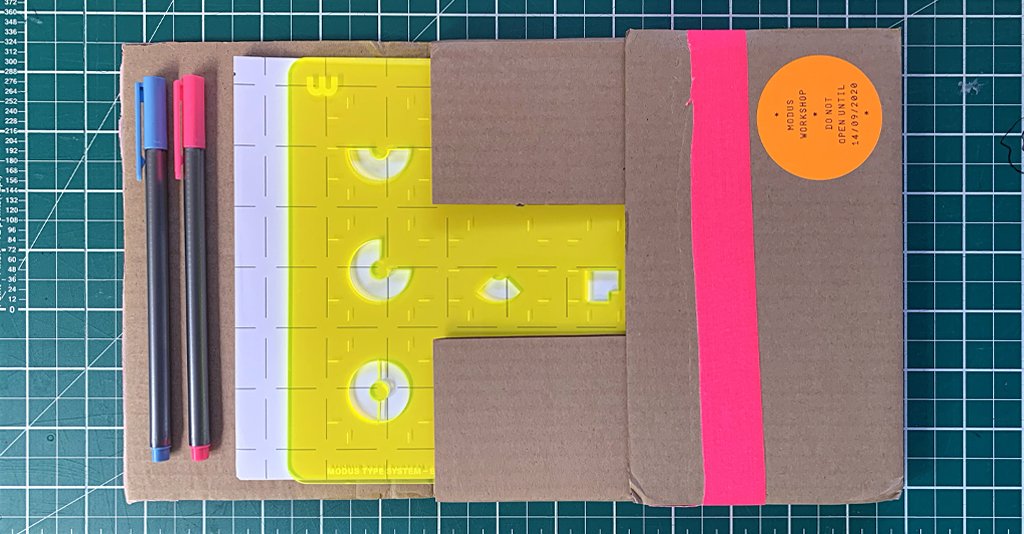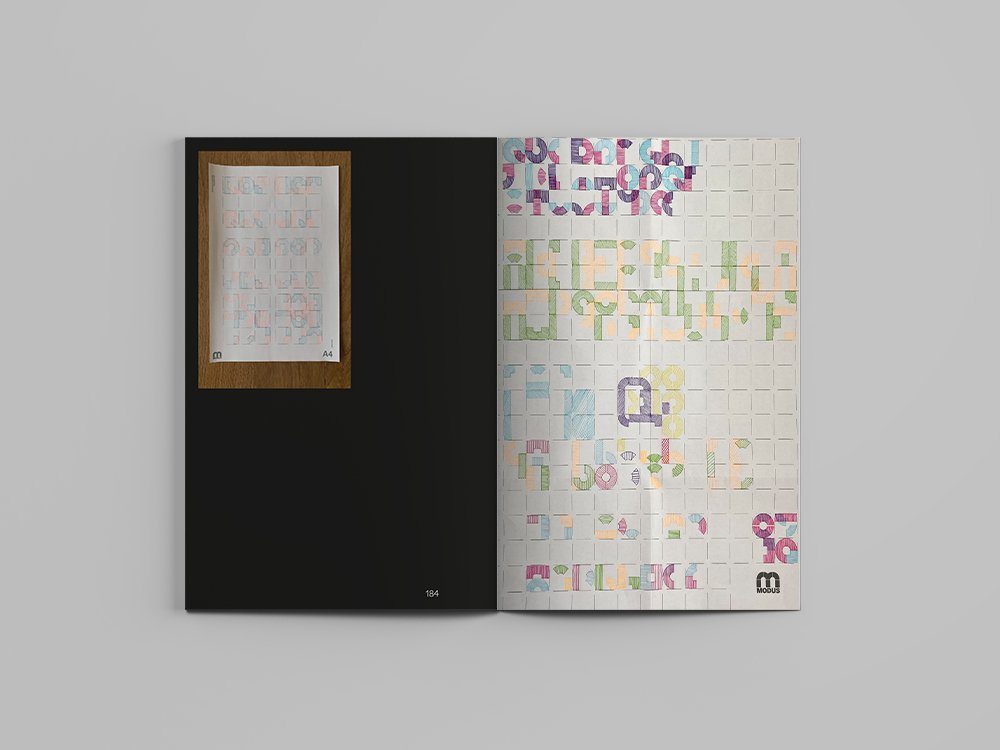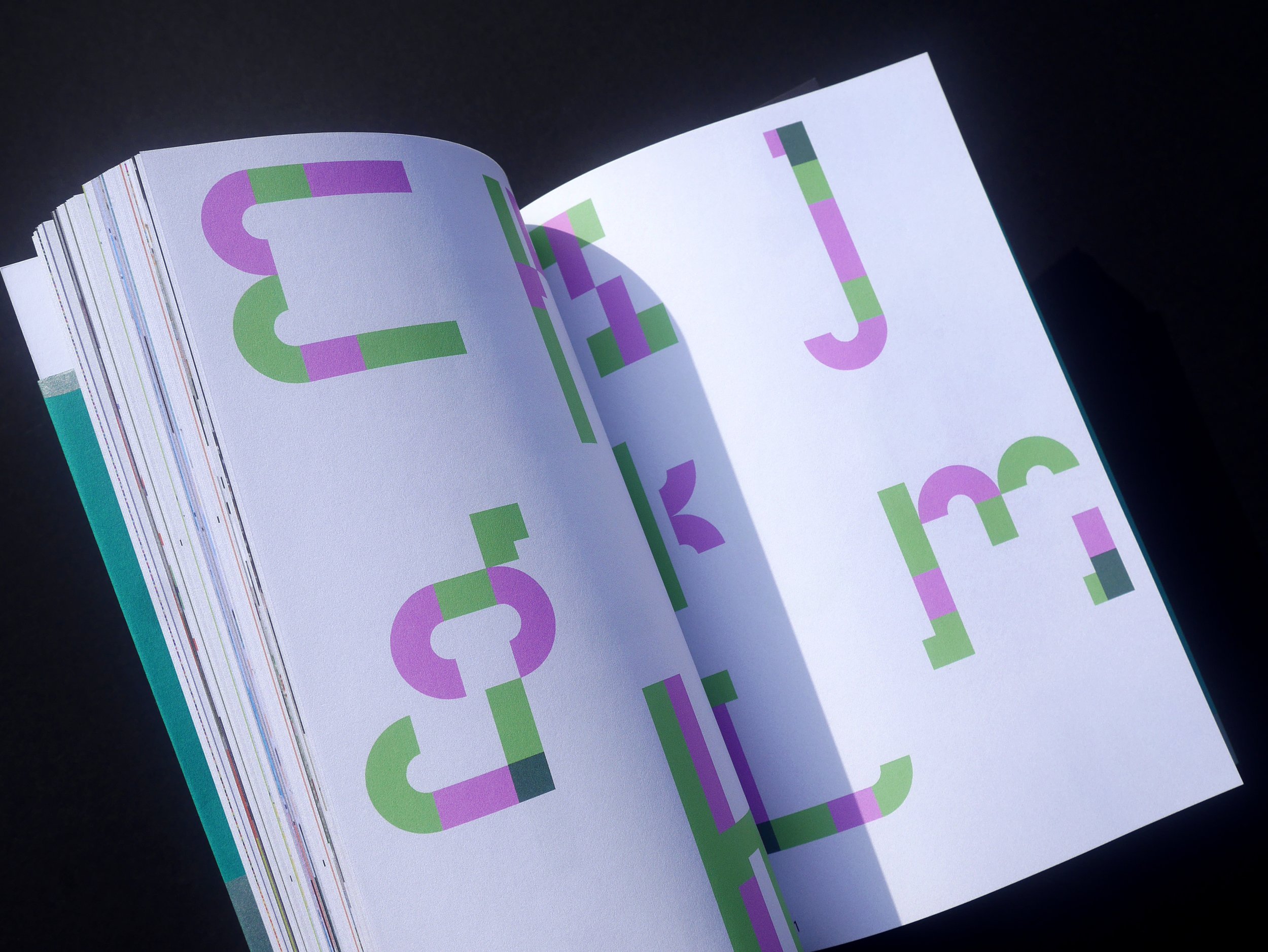The MODUS Type Project:
Process / Action / Meaning
The Modus type project is an investigation into modular typographic design and the potential expansion of language. In his book, ‘Understanding Molecular Typography’, H.F.Henderson asks, “could new letters lead to new words with meanings previously inexpressible?”, a question that underpins the purpose and direction of Cooper & Hutchinson’s experiments.
The project was initiated two years ago by Alexander Cooper and Tim Hutchinson. Based on the structure of a type face they designed for a feature in their typographic editorial, ‘Im_Pressed’, a reductionist process was adopted in order to filter the design down in to a set of fundamental core units. Once these units had been established, the process of building a tool that would allow users to create and (re)generate was started.
The Modus v.1 system comprises of a set of nine core graphic units in both a stencil form for drafting, and a wood block set for printing. The system allows users to create conventional letterforms but also has the potential to generate new forms with curious flourishes & alternative accents that may communicate new messages and information. The stage is set for discovery and with the system allowing different units to rotate, shift laterally and vertically within the controlled grid structure, the possible count of unit combinations runs into hundreds of millions.
The project was launched during the 2020 London Design Festival events at London College of Communication. A workshop took place where participants explored ‘meaning through making’, where a series of seed words including Latin origin words, became visualised, these were then fused with others words to create a new set of forms that were part character, part symbol. The final set were printed on paper to create a permanent, collective specimen of all the contributors work.
Following the LDF exercise, Cooper and Hutchinson were asked to deliver a workshop as part of the Hamilton Wood Type & Printing Museum’s annual Wayzgoose event in October. Originally billed as physical workshop, the focus had to shift to online delivery with participants attending from over twelve location across the USA—from Arizona to Virginia, Texas to Michigan. During this workshop, participants were tasked with developing a set of specific letterforms, characters and numerals. Following an intensive session with multiple critiques of their progress, a complete typeface was developed. This was then digitally assembled into a working font and also printed as a complete specimen for the participants.















